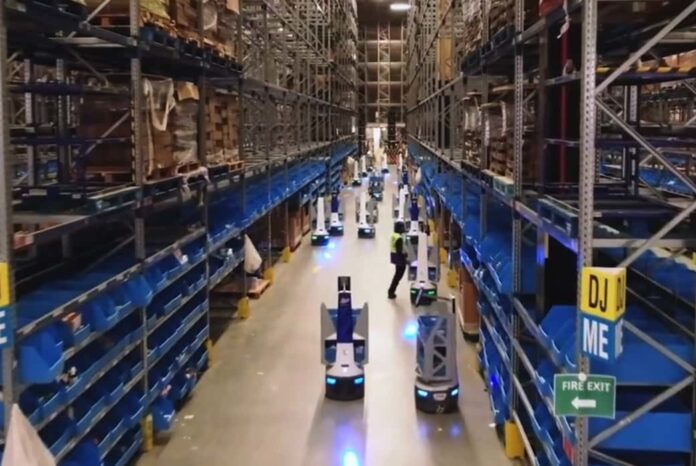Welcome to 2024, the beginning of the 15th year of this blog. I am glad to have you along for the ride. To date, more than 3,800 postings are to be found on the site, so I hope when you visit that you can use the tags, categories, menus, and search window to maximize the value of each visit.
To start the year I thought a look ahead on various topics would be interesting. This posting covers robotics: where we are today and where we expect they will be by the end of this decade and a bit beyond.
Domestic Robots
Twelve years ago I bought my first Roomba, a robot vacuum cleaner. It got the attention of our dog Maya who would walk away anytime the Roomba entered the room where she was resting. The Roomba was smart enough to cross the floor in what appeared to be a random pattern as it picked up dust, hair, crumbs, and other detritus. It had to be steered away from stairs and sometimes got tangled in wires or stuck under a piece of furniture. It often ran out of power before it could make it back to its docking station. As smart machines go, I considered it slow with not much of an IQ.
Since that first interaction with my Roomba, I have been following the changes happening to domestic robots. These consumer products no longer just clean floors. They wash windows, mow the grass, shampoo carpets, and more. They are now commonly found in homes and are no longer novelties. But what’s coming is a leap in robot capability brought on by artificial intelligence (AI). The incorporation of AI into these domestic helpers is giving them the ability to absorb inputs and real-time data and make independent decisions.
My Roomba just doesn’t cut it anymore. It has been replaced by intelligent domestic robots that learn and become more efficient at their jobs. Beyond being good domestics that do the drudge work in our lives, they can engage humans in conversations that pass the Turing Test. These vacuums, polishers, window cleaners, and other household appliances are now capable of not just talking to us but also anticipating our needs.
Industrial Robots
Similarly, robots being used in manufacturing, logistics, and other business pursuits are also being infused with AI. Yulin Wang, Senior Technology Analyst, at IDTechEx, recently has described just how profound these changes are and why they are happening.
Wang sees the adoption of more robot helpers as directly linked to rising labour costs and the recent pandemic which created a surge in e-commerce. This has led to rapid growth in the use of logistical support and delivery robots.
Warehouse and distribution operations, intralogistics material transport, and last-mile delivery are where robotic use will grow states Wang. He cites a 261-fold growth between 2015 and 2022 in usage.
Two types of robots are being used in these applications. Robotic automated guided vehicles (AGVs) are more in demand currently. Autonomous mobile robot (AMR) demand is expected to eventually surpass the use of AGVs which are presently easier to implement using floor identifiers such as tapes, grids, and QR codes for navigation. AMRs rely on onboard LiDAR and cameras to provide greater flexibility. But with the flexibility comes increased costs. Wang predicts that AMRs, however, will eventually predominate as costs come down and forecasts a 52-fold increase in AMR use from 2023 to 2044.
Today, shopping malls, concourses, airports, hospitals, and many large indoor environments use AGV and AMR robots. In these controlled indoor environments, robots are capable of navigating and managing low-difficulty tasks.
Delivery Robots
Where an AGV cannot go, an AMR robot can. The latter freed from the confines of buildings can be used for deliveries to homes and businesses. They may be a rare sight today. But sidewalk robots, autonomous delivery vehicles, and aerial drones are expected to become far more prevalent as the decade unfolds taking advantage of the increasing sophistication of AMR technology. Your pizza and prescription drug deliverer may soon be a smart machine that not only runs autonomously but calls you to let you know when it has arrived.
Agricultural Robots
The rise of precision agriculture and smart farming is leading to the increasing adoption of agricultural service robots. Computers have been a part of farm operations for several decades. The majority of these solutions relied on time-intensive data entry. Smart farming, however, eliminates a lot of the keying by using low-cost, fully autonomous agricultural mobile robotic systems to gather and feed data to software application dashboards to provide a farmer with a real-time view of operations.
Farms today are adopting mobile autonomous systems that can do seeding, weeding, irrigating, continuous monitoring, and harvesting. Adoption of these systems directly reflects changes in agribusiness with continuing consolidation of farm properties and declining farm labour numbers. And it doesn’t hurt that the cost of these helper robots doesn’t break the bank.
Cobots
The term cobot is short for collaborative robot. These industrial robots are designed to work side-by-side with humans. Unlike the automated equipment produced by Cincinnati Milacron and Fanuc, two of the early builders of industrial robotic arms, where the machines were separated from humans to ensure the safety of the latter, cobots pose no threat to their human coworkers.
Today, cobots are being designed for both small and large industrial operations. From small warehouse and manufacturing operations to automotive manufacturers such as Audi and Nissan, the integration of cobots and humans in the work environment is underway. Wang’s company, IDTechEx, forecasts that demand for cobots will exceed 4 million units annually by 2043. The growth in demand has led to the emergence of new companies that include Universal Robots, TechMan Robot, Elite Robots, Kawasaki, and Neura Robotics. These join the established robot builders that include ABB, KUKA, and Fanuc.








